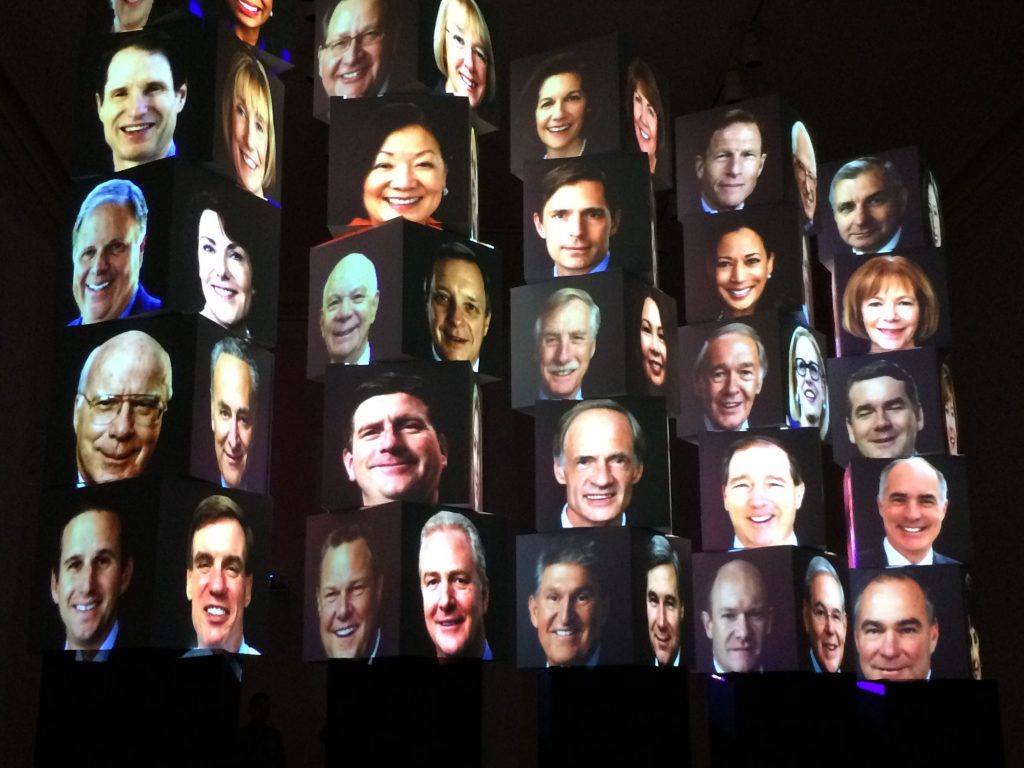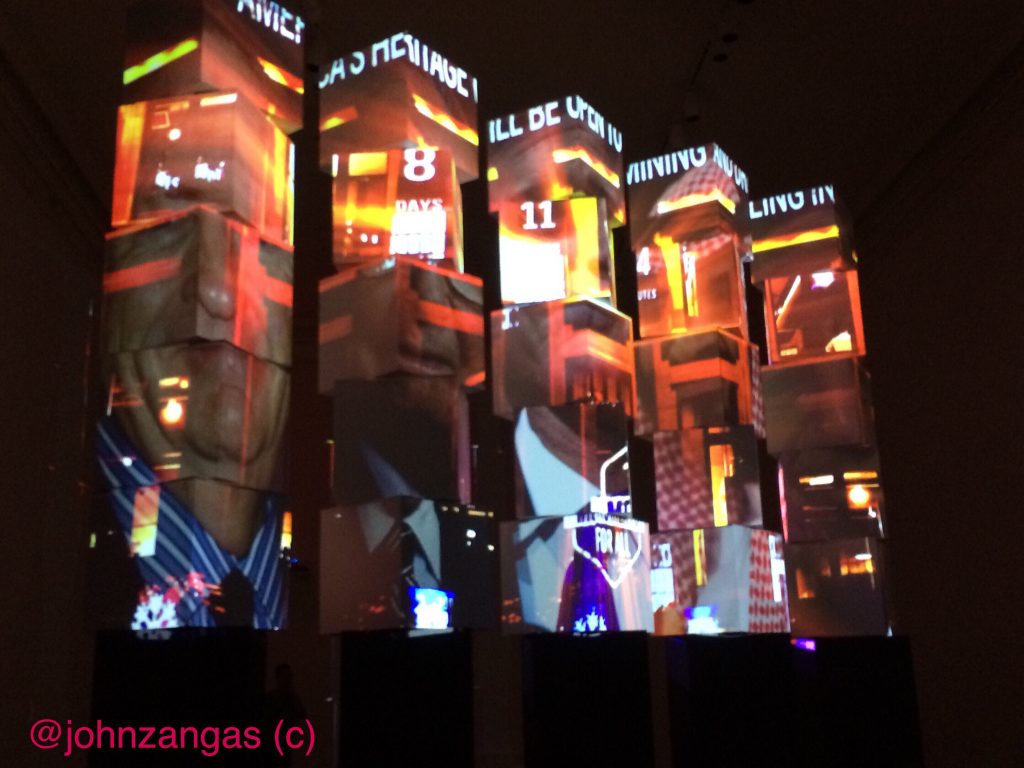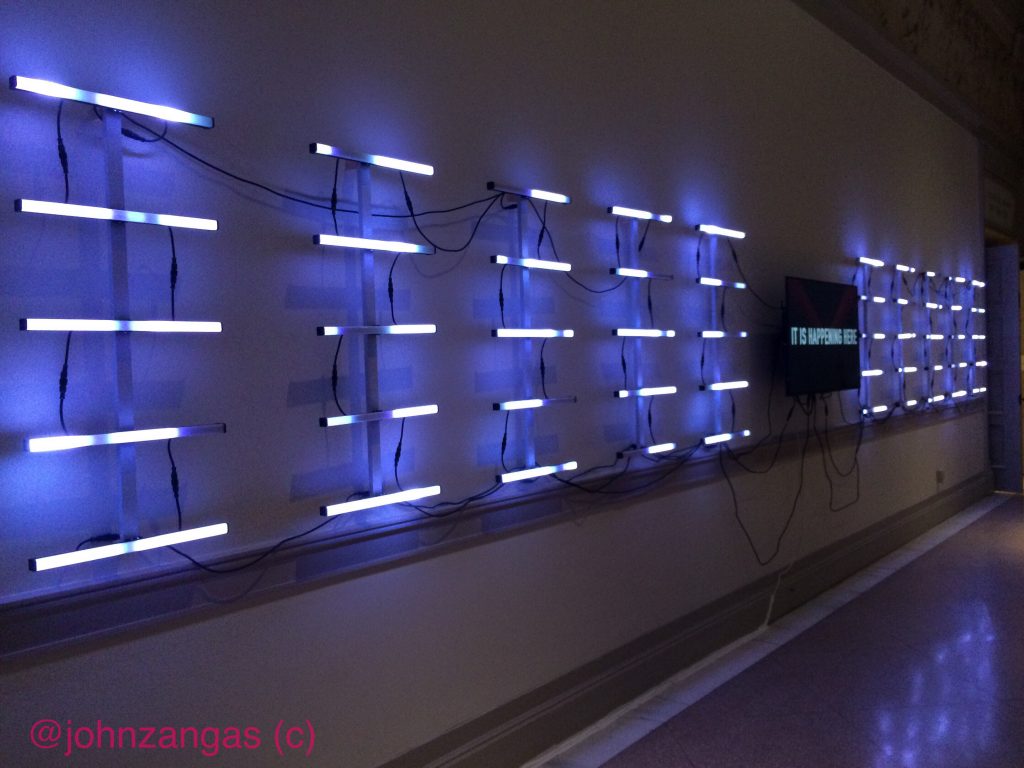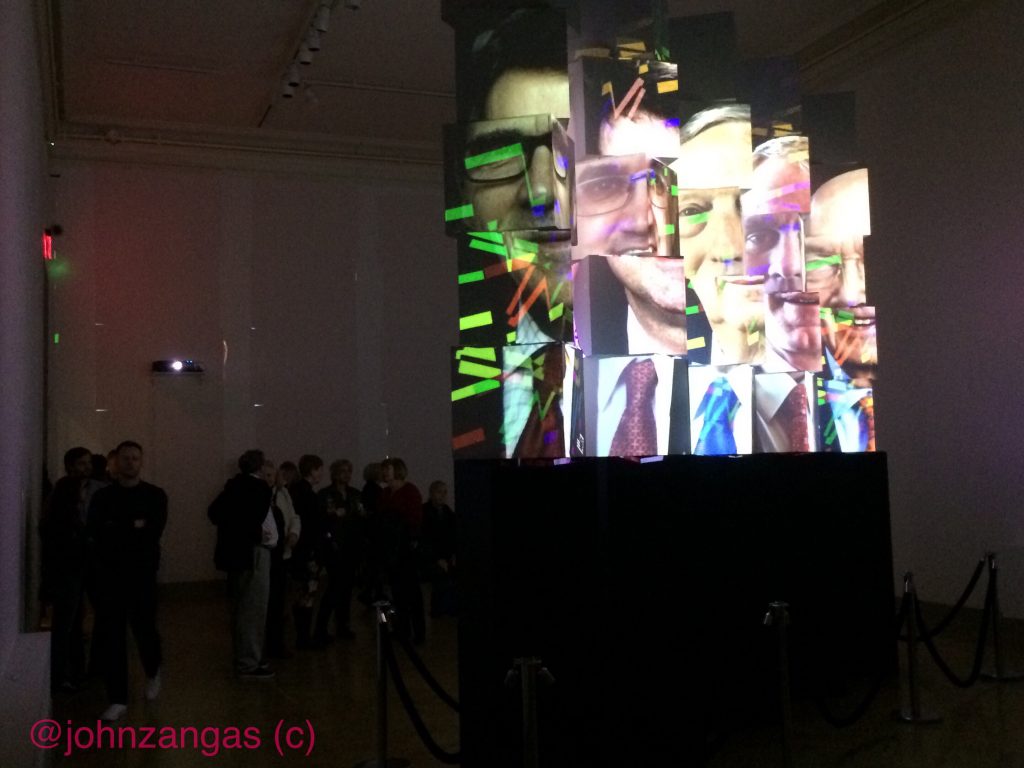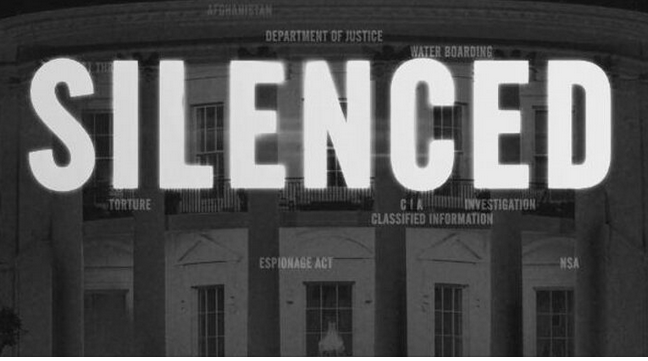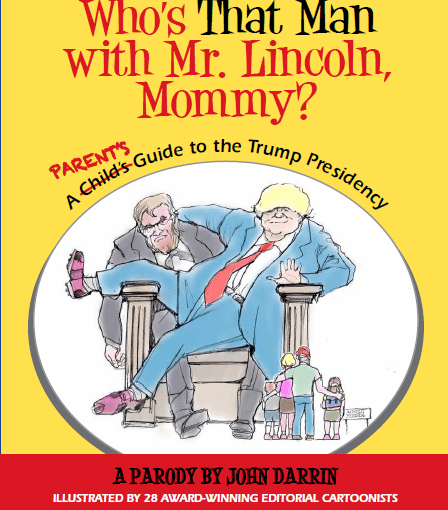Washington, DC — Multimedia artist and filmmaker Robin Bell premiered a moving lights and projection exhibition of what an open and transparent society should be at the Corcoran School of Arts and Design at George Washington University. ‘OPEN: an installation by Robert Bell’, uses light and projection to celebrate transparency, belonging, and accessibility with a social commentary about closed thought, exclusion, erasure, and authoritarianism. (See interview of Visual Artist Robin Bell video and premier of show at foot of this story).
Bell is known nationally for his works and guerilla light projections of social commentary on well-known venues in Washington, DC, New York, and Los Angeles.
On one side of the main hall displays a static byline, “Our President Is Closed” while underneath, a series of neon strobes beam. Across the gallery a scrolling marquee displays the Marie Kondo-inspired message, “Our President Does Not Spark Joy.”
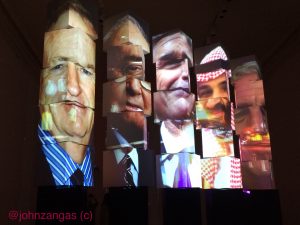 But the main attraction, entitled “The Swamp,” animates central political figures of our time on a giant 25-foot lattice of cubes. The smiling faces of 500 influential politicians, financiers, and media personalities are projected at the beginning of the sequence and represent a societal trend towards closure, censorship and erasure. Bell analyzes these leaders by stripping them piece by piece, until their facial bones blink and fade, leaving their dying messages of oppression. Thus he creates an allegory of the last chapter of an authoritarian regime.
But the main attraction, entitled “The Swamp,” animates central political figures of our time on a giant 25-foot lattice of cubes. The smiling faces of 500 influential politicians, financiers, and media personalities are projected at the beginning of the sequence and represent a societal trend towards closure, censorship and erasure. Bell analyzes these leaders by stripping them piece by piece, until their facial bones blink and fade, leaving their dying messages of oppression. Thus he creates an allegory of the last chapter of an authoritarian regime.
Then the faces are replaced with pillars of shapes of brightness and vibrancy, representing openness and transparency. The intent is to cause one to open a window of thought into themselves.
In this commentary, he shatters the illusion that we participate in an open and transparent democratic government, by and for us, by animating and dissecting its representative faces. The merging of his film-making, his multimedia skills in dynamic video collage, and its projection, resembles a moving electric Picasso-esqe painting, captivating the viewer.
His objective is to get people to think a different way about the present conflicts underway between oppression and liberation and envision what their role would be in creating an open and transparent society.
That this display has opened across the street from the South Lawn of the White House is no accident. Bell has stirred controversy before with his ‘Emoluments Welcome’ projection on Trump Hotel in 2017, and the Petroleum Institute.
He timed his display near the 30th anniversary of the cancellation of the Robert Mapplethorpe Exhibition “The Perfect Moment” to highlight its censorship. In 1989, the Corcoran Gallery of Art declined to display Mapplethorpe’s photography portfolio, fearing it would lose funding from the National Endowment of the Arts. Bowing to influential conservative viewpoints that Mapplethorpe’s photos were inappropriate and obscene, the Corcoran Gallery was caught up in a war between censorship and artistic freedom of expression.
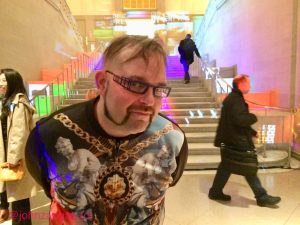 Artist Robin Bell/Photo by John Zangas
Artist Robin Bell/Photo by John ZangasBell said that ‘Open’ represents an ideal of what we should want to achieve in a democratic society: open borders, open thought, open dialogue, with belonging and accessibility.
“We are in a government of a time period where so many people want things closed. We’re asking everyone to be open and to think about what that means. In a time when the President wants to close borders and thought, we want to say, ‘No,’” he said.
Bell is emphatic that we are living in a troubling time, but there is promise and hope if people help and support each other.
The talented musician Douglas Kallmeyer played an electronic base while feeding the venue with background tones and vibrations to set the mood.
OPEN will run from February 7 through March 31 at the Corcoran Art School of Design. Bell promises it will undergo additional periodic updates as the changing political climate unfolds.
“There was no way we could come up with one message, one thing that would last the entire two months, so the show will actually change over the next two months until March 31st. The projections you see tonight will be different when you come back in two, three weeks from now, just as the world will be a little different,” he said.


